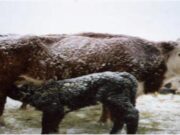
Milk represents a good source of nutrients and liquid for hydration and is known to humanity thousands of years ago. The fermentation of milk provides a simple way to increase its shelf-life while improving its safety. Different strains of bacteria and fungi are used for the fermentation of milk in order to produce a wide variety of dairy products viz. curd, yogurt, cheese, kefir, and kumis. The main bacteria are lactic acid bacteria that are used for coagulation of milk and thereafter, these can be processed for diverse products.
Mechanism of Fermentation
Microbes ferment the carbohydrates present in milk, mainly lactose to lactic acid. Lactic acid act as a preservative for milk and also its low pH (4.5- 5.0) inhibits the growth of harmful micro-organism, hence increasing the shelf life of the product. The acid precipitates the protein in milk, therefore fermented products are usually of a thicker consistency than milk. The high acidity and low pH hinder the growth of other bacteria including pathogens. Humans learned to control fermentation processes from the initial accidental events in fermentation. This learning of controlled fermentation of milk in domestic practices had given way to diverse dairy products influenced by the habits of the different ethnicities, geographical environments, and the type of dairy farming.
Fermented Products
Various types of fermented milk and derived products have been developed in all parts of the world each with its own characteristic history. Their nature depends very much on the type of milk used, on the pre-treatment of the milk, on the temperature (climate), the conditions of the fermentation, and on the subsequent technological treatments. Most commonly used dairy products include curd, yogurt, cheese, kefir, and kumis.

1.Curd (Dahi)
Curd is manufactured using single or mixed cultures, Lactococcus cremoris, Lactococcus diacetylactis, along with Leuconostoc species and Lactococcus lactis, a combination of acid and flavor-producing bacteria. These bacteria are responsible for imparting a firm body, sweetness, and a mild acidic flavor to the curd increasing its acceptability to the consumer.
2.Yogurt
Yogurt is a popular fermented dairy product produced by lactic acid bacteria, including Streptococcus thermophilus and Lactobacillus delbrueckii ssp. bulgaricus. During yogurt production, these bacteria produce lactic acid, decrease pH, and cause milk protein to coagulate. Their metabolites, such as carbonyl compounds, non-volatile or volatile acids, and exopolysaccharides, strongly affect the quality of yogurt.
3.Cheese
Cheese is a fermented milk product and historically serving as a mean of preserving milk. Cheese making occurs in three main stages:
In the first stage, milk is moulded into the solid curd and the liquid whey by the coagulation of the milk protein, casein. The coagulation of casein is done through two complementary methods: acidification and proteolysis. Acidification occurs when lactic acid bacteria ferment the disaccharide lactose to produce lactic acid. Originally, it can be done by naturally occurring lactic acid bacteria in the milk but today, dairy industries usually standardize the process by the addition of the domesticated bacterial cultures, including strains of Lactococcus lactis, Streptococcus thermophilus and Lactobacillus sp. The production of acid by these bacteria causes casein to coagulate slowly. This process is often assisted by the addition of the enzyme, chymosin (active ingredient in rennet). Chymosin removes negatively charged portion of casein that results in rapid aggregation of casein proteins.
In the second stage, curd is separated containing the casein and milk fat from the whey. Depending on the type of cheese, the curd can be heated, salted, pressed and is moulded into various shapes and sizes. Cheese can be eaten afresh at this point, or it can be left to age in a damp, cool place.
During the third/aging stage, cheese is truly transformed from fresh cheese into the myriad flavours, aromas, and textures of mature cheese. As a normal part of the aging process, cultures and lactic acid bacteria continue to grow and metabolize the interior of the cheese, while the surface of a cheese is colonized by bacteria and fungi that form a multispecies bio-film called as ‘rind’ of the cheese. Diversity in the cheese flavor, smell and texture is because of different microbes. Cheese flavor is associated with amino acid catabolism. The ability of lactic acid bacteria and other cheese microorganisms to degrade amino acids to aromatic compounds is highly strain-dependent.
4.Kefir
This light alcoholic beverage is prepared by inoculation of raw milk with irregularly shaped, gelatinous white/yellow grain called kefir grains. These kefir grains have varying and complex compositions of microbial species such as of lactic acid bacteria, acetic bacteria, yeasts and fungi. These microbial species are classified into four groups: homofermentative and heterofermentative lactic acid bacteria, and lactose and non-lactose assimilating yeast. In that way, Lactobacillus paracasei ssp. paracasei, Lactobacillus acidophilus, Lactobacillus delbrueckii ssp. bulgaricus, Lactobacillus plantarum, and L. kefiranofaciens are predominant species. However, these species represent only 20% of the Lactobacillus in the final fermented beverage, with the remainder consisting of Lactobacillus kefiri. The predominant species of fungus are Saccharomyces cerevisiae, S. unisporus, Candida kefyr, and Kluyveromyces marxianus ssp. marxianus.
5.Kumis (Koumiss)
Kumis and kefir are similar dairy products but kumis is produced from a liquid starter culture as compared to solid kefir “grains”. It has mild alcohol content as compared to kefir because mare’s milk contains more sugars than other milks. It is very popular in Kirgizstan, Mongolia, Kazakhstan and some regions of Russia and Bulgaria. It is usually made from mare’s milk by spontaneous fermentation of lactose to lactic acid and alcohol. Depending on the lactic acid contents, kumis is of three types- strong, moderate and light.
A.Strong kumis: It is generated by lactic acid bacteria like Lactobacillus bulgaricus, Lactobacillus rhamnosus. There is acidification of milk to pH 3.6–3.3 and the conversion ratio of lactose into lactic acid is about 80–90%.
B.Moderate kumis: It involves Lactobacillus bacteria like Lactobacillus acidophilus, Lactobacillus plantarum, Lactobacillus casei, and Lactoacillus fermentum with restricted acidification properties that lower the pH to 4.5–3.9 at the end of the process, and the conversion ratio averages 50%.
C.Light kumis: It is a slightly acidified product (pH 4.5– 5.0) and is produced using Streptococcus thermophilus and Streptococcus cremoris.
Also, read | Ice Cream: Origin, Types, and Processing
Authors:

Vishal Yadav
M.V.Sc. Scholar, Department of Veterinary Gynaecology and Obstetrics College of Veterinary and Animal Science, Bikaner
Shivali Khandelwal
M.V.Sc. Scholar, Department of Veterinary Microbiology and Biotechnology
Corresponding author: Shivali Khandelwal (M.V.Sc. Scholar),
email:shivalikhandelwal11@gmail.com



















